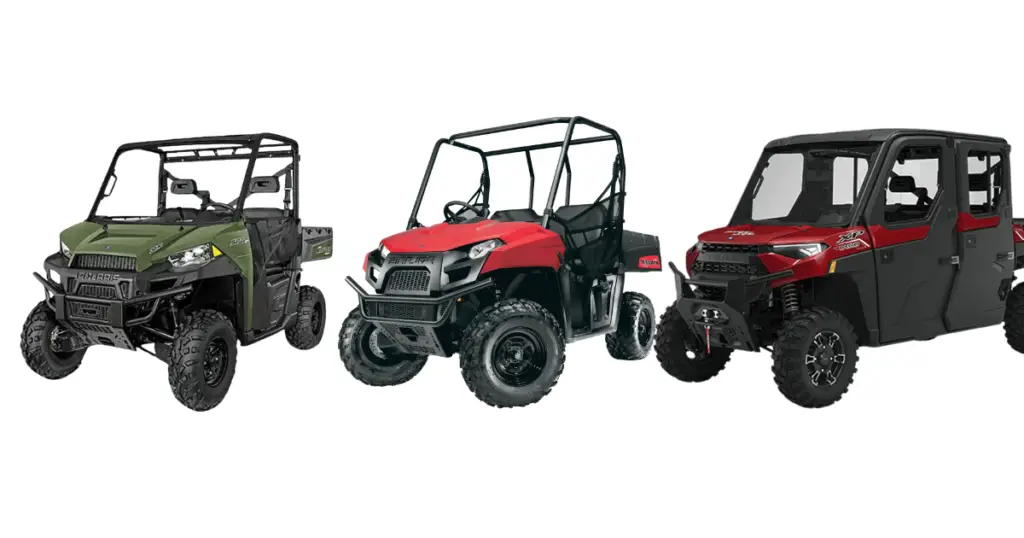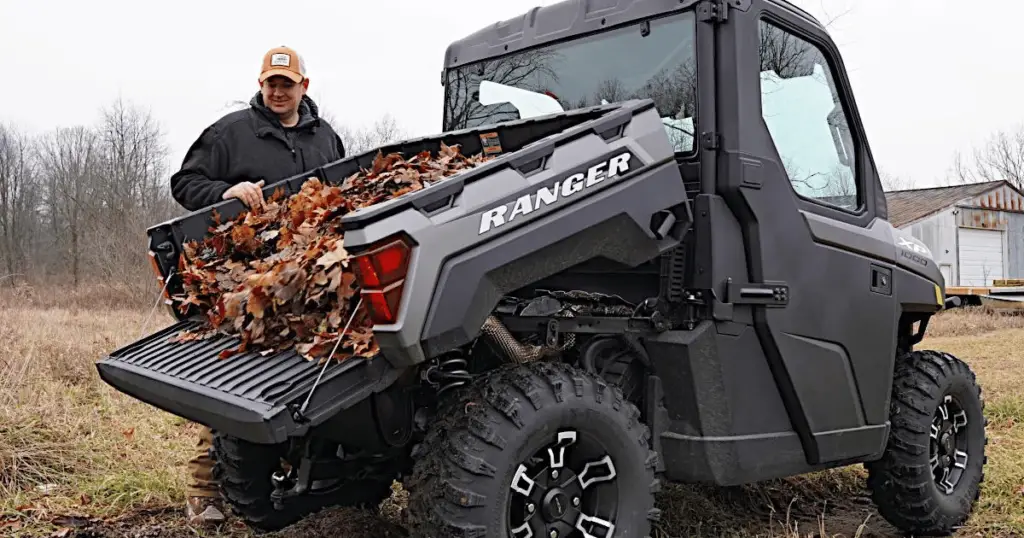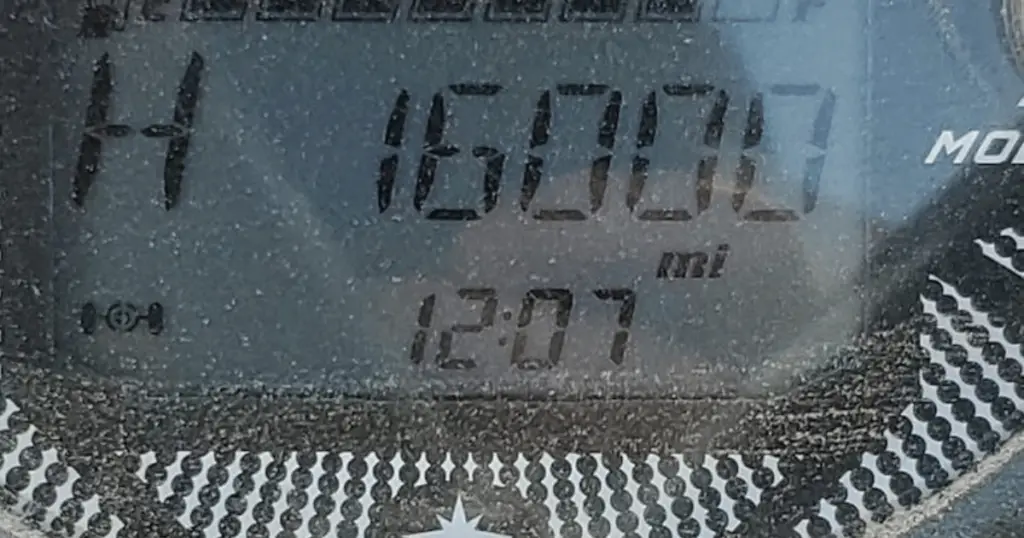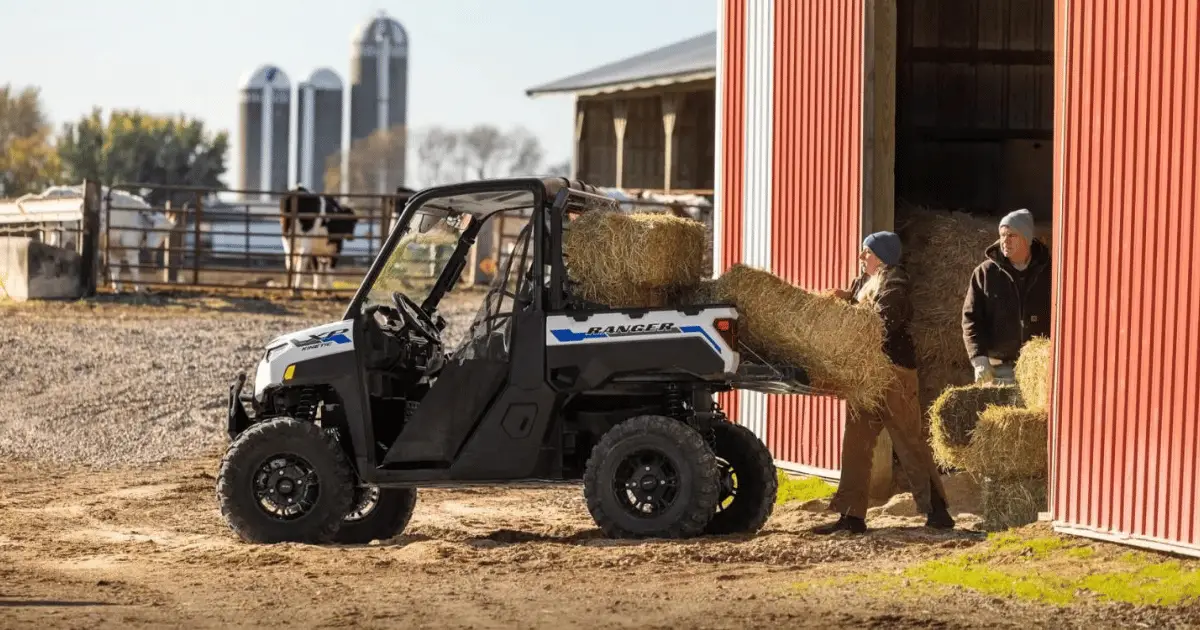Imagine you’re deep in a conversation with the most hardcore off-road enthusiasts you know, and the topic turns to the durability of utility task vehicles. You can almost hear the dust settling as someone brings up the Polaris Ranger. It’s a machine that’s become synonymous with rugged reliability, isn’t it? Now, you’re probably wondering just how many miles will a Polaris Ranger last before it’s time to call it quits? The lifespan of a Polaris Ranger is more than a matter of numbers; it’s about the adventures it endures and the maintenance it receives. But for those who like to look at the odometer as a badge of honor, you’ll be intrigued to know that with proper care, many owners report their Rangers conquering anywhere between 10,000 to 20,000 miles and still going strong. Your Ranger’s mileage may vary, but one thing’s for sure — each mile promises a story to tell. Keep reading and let’s dive into it.
But first, if you’re worried about common problems found in the Ranger, here’s a comprehensive list:
- Polaris Ranger Starting Problems? Don’t Worry About It
- Polaris Ranger Clutch Problems Get Fixed and Revealed
- Polaris Ranger Drive Shaft Problems? Help Is Here!
- Polaris Ranger Rear Differential Problems: Too Much Trouble?
- Polaris Ranger Voltage Regulator Problems Get Fixed, Easily
- Polaris Ranger Front Differential Problems Get Fixed
- Polaris Ranger Starter Problems? Help Is Finally Here!
- Worst Polaris Ranger Transmission Problems To Know
- Polaris Ranger Overheating Solutions and Radiator Issue Fixes
- Polaris Ranger Turf Mode Problems Fixed
Understanding the Longevity of a Polaris Ranger
Factors affecting vehicle longevity
When you’re trying to gauge how long your Polaris Ranger will last, there’s a slew of factors to take into account. Everything from how you ride it, where you ride it, to how well you maintain it—plays a role in its lifespan. It’s a lot like taking care of your own health; regular check-ups, a good diet, and the right environment can work wonders.
Average lifespan estimates for UTVs
On average, a Utility Task Vehicle (UTV) like the Polaris Ranger can have a lifespan ranging anywhere from thousands to tens of thousands of miles on the odometer—sometimes more. But more than just numbers, it’s how those miles are racked up that counts. A smooth operator who takes care of their ride can find their Ranger outlasting those estimates with grace.
Specifics about Polaris Ranger design and durability
Your Polaris Ranger isn’t just any UTV; it’s designed with durability in mind. From a sturdy chassis to robust engine options, these machines are built to take a beating. And Polaris has been at it for years, so they’ve had time to really nail down what makes a UTV withstand the test of time.
Polaris Ranger Model Variations

Different models and their impact on longevity
Now, not all Rangers are created equal. There are different models tailor-made for varying demands. You’ve got the more robust models that can tackle tougher terrain for longer, and then there are those more suited for light leisure activities. Whichever you choose, know that each has its own set of factors affecting its longevity.
Comparing lifespan across the Polaris Ranger series
Comparing the lifespans of the range can be a bit like comparing apples to oranges. They’re all fruit, but they taste different, right? It’s the same with the Ranger series. Some models boast beefier components that may fare better over time, while others are designed for less intense usage and could potentially see a longer life due to less strain.
Engine types and their influence on vehicle life
The heart of your Polaris Ranger is its engine, and the type you’ve got purring under the hood makes a difference. Diesel engines generally offer more durability, while petrol engines are all about that pep and power. Either way, taking care of this core component is crucial for longevity.
With all this in mind, I ask you this: What are the Polaris Ranger years to avoid?
The Role of Maintenance in Polaris Ranger Longevity
Importance of regular maintenance
Good maintenance practices for your Polaris Ranger are akin to eating your veggies and hitting the gym. A well-maintained Ranger can defy expectations and last much longer than one that’s been neglected. It’s all about preventive care rather than reactive repairs.
Recommended maintenance schedule
Sticking to the recommended maintenance schedule is like following a doctor’s orders. It typically involves routine checks and replacements at certain milestones. Your Ranger comes with a manual that outlines all this for you, so you don’t have to guess when it’s time for a check-up.
Common maintenance tasks for the Polaris Ranger
Regular tasks to keep your Ranger in tip-top shape include engine oil changes, air filter replacements, and checking fluid levels. It’s like making sure you stay hydrated and keep your energy up—basic but essential for long-term health.
Impact of Usage Patterns on Lifespan

Effects of off-road vs. on-road use
Where you take your Ranger plays a big role in its lifespan. Those who stick to on-road use may find less wear and tear than the off-road adventurers. Bumpy trails and gritty conditions put more stress on your vehicle, so those who go off the beaten path might need to give their Ranger a little extra TLC.
Influence of driving style on Polaris Ranger lifespan
Your driving style also comes into play. If you’re light on the throttle and brake gently, your Ranger will thank you by lasting longer. Aggressive driving, on the other hand, can lead to quicker wear-out of critical components.
How towing and payload capacities affect longevity
Just like lifting weights at the gym, you’ve got to know your limits. Your Ranger has specific towing and payload capacities, and sticking within these recommended limits can prevent undue strain on the engine and transmission, contributing to a longer vehicle life.
Real-World Mileage Reports from Polaris Ranger Owners

Case studies and owner testimonials
Some of the best intel comes from those who’ve been in the trenches with their Rangers. Real-world case studies and testimonials offer candid insights into what mileage your Ranger might achieve under various conditions.
Mileage benchmarks achieved by users
You’ll hear stories of Rangers hitting impressive mileage benchmarks, sometimes with little more than routine maintenance and care. These benchmarks are a testament to what these UTVs can achieve when they’re well-cared for.
Statistical lifespan data from Polaris Ranger communities
Polaris Ranger communities online are goldmines of information, often sharing statistical data on lifespan and maintenance. It’s like having a crystal ball that gives you a glimpse into your Ranger’s potential future.
Common Issues and Repairs That May Affect Ranger Lifetime
Typical wear and tear problems
Like any vehicle, your Ranger will experience some common wear and tear items. Think brakes, tires, and suspension parts—stuff that’s bound to wear down with regular use.
Major repair scenarios
Sometimes, you might face a major repair scenario. This could be something like a transmission rebuild or an engine overhaul, which could happen especially if you push your Ranger to its limits consistently.
Strategies for addressing common issues promptly
The key to longevity, though, is not to let these issues fester. Addressing common problems promptly can prevent them from snowballing into bigger, more costly repairs down the line.
The Influence of Environment and Climate on Polaris Ranger Durability
Adverse weather conditions and vehicle wear
Weather conditions can be tough on your Ranger. Extreme cold can be hard on batteries and fluids, while heat can stress cooling systems. Not to mention, moisture can lead to rust, and that can weaken structural integrity over time.
Geographical factors in vehicle degradation
The terrain and climate of your region can also contribute to vehicle wear and tear. Salt on the roads in snowy regions, for instance, can accelerate corrosion, while dry, dusty areas might clog up filters faster.
Protective measures for different environments
Protecting your Ranger from the elements is critical. Storage solutions, protective coatings, and even routine washes can mitigate the adverse effects of various environments.
Best Practices to Enhance the Lifespan of Your Polaris Ranger
Utilization of OEM parts for repairs and replacements
When it’s time for repairs or replacements, using Original Equipment Manufacturer (OEM) parts can keep your Ranger roaring longer. These parts are designed specifically for your vehicle, ensuring a perfect fit and optimal performance.
Upgrades and modifications that may extend lifespan
You can also consider upgrades and modifications that not only add to the cool factor but can enhance lifespan. Think more robust suspensions or heavy-duty cooling systems—upgrades that help your Ranger better handle what you throw at it.
Proper storage techniques for long-term preservation
Think of storage as your Ranger’s downtime. Proper storage techniques, like using a cover or keeping it inside, can do wonders for long-term preservation. It’s about giving your vehicle a good rest so it’s ready to perform when you are.
Comparing Polaris Ranger Lifespan to Other UTV Brands
Lifespan comparison with similar UTV models
If you’re curious about how your Ranger stacks up against the competition, taking a look at how similar UTV models from other brands fare can offer some perspective. This can give you a sense of where the Ranger shines or where it might need a little extra care.
Brand reputation and reliability
Part of what you’re buying with a Polaris Ranger is the brand’s reputation for reliability. They’ve been around the block, and their UTVs have been through some heavy lifting, giving you a sense of security in their longevity.
Resale value and longevity
When it comes to resale value, a well-maintained Ranger with a reputation for longevity can hold its value well in the market, making all your efforts in upkeep a doubly good investment.
Future Outlook and Enhancements for Polaris Ranger Longevity
Technological advances and their implications
As technology marches on, so do the enhancements in UTV design and durability. Your future Ranger will likely boast new features and materials that could significantly extend its life expectancy.
Upcoming features designed to improve durability
Manufacturers are always on the lookout for the next big thing to improve durability. This means upcoming Polaris Ranger models may offer features specifically aimed at longer life spans, like advanced diagnostics or even more robust build quality.
Industry trends in UTV lifespans
Looking at industry trends, it’s clear that longevity is a big selling point. As a consumer, you can expect UTVs, in general, to become more resilient over time, giving you more bang for your buck and a companion for the long haul.
Frequently Asked Questions
What is Considered High Miles on a Polaris Ranger?
High miles on a Polaris Ranger are typically considered to be over 10,000 miles. However, this can vary based on how well the vehicle has been maintained and the type of use it has seen.
Is 600 Hours a Lot on a Polaris Ranger?
Yes, 600 hours is considered a significant amount of use for a Polaris Ranger. This is especially true if the vehicle has been used under strenuous conditions. However, with proper maintenance, a Polaris Ranger can still operate effectively beyond this point.
How Long Does a Polaris Engine Last?
A Polaris engine can last well over 10,000 miles or 1,000 hours with proper maintenance. The lifespan varies depending on factors like usage intensity, maintenance schedule, and operating conditions.
How Often Should I Change the Oil in My Polaris Ranger?
It’s recommended to change the oil in a Polaris Ranger every 100 hours of use or once a year, whichever comes first. Regular oil changes are crucial for maintaining engine health and performance.

Leave a Reply